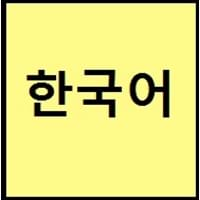Countries
India
China, Jilin Province, North Korea, South Korea, Yanbian
National Language
Bangladesh, Bhutan, India, Nepal
North Korea, South Korea
Second Language
Not spoken in any of the countries
Not spoken in any of the countries
Speaking Continents
Asia
Asia
Minority Language
Not spoken in any of the countries
Japan, People's Republic of China, Russia, United States of America
Regulated By
Not Available
The National Institute of the Korean Language
Interesting Facts
- Santali language was an oral language till nineteenth century.
- Before the invention of Santali alphabets, Santali was written with the Bengali or Odia alphabets.
- Korean has borrowed words from English and Chinese.
- Korean has two counting systems. First, is based on Chinese characters and numbers are similar to Chinese numbers, and second counting system is from words unique to Korea.
Similar To
Munda Language
Chinese and Japanese languages
Derived From
Not Available
Not Available
Alphabets in
Santali-Alphabets.jpg#200
Korean-Alphabets.jpg#200
Scripts
Bengali, Devanagari, Latin, Ol Chiki, Oriya
Hangul
Writing Direction
Left-To-Right, Horizontal
Left-To-Right, Horizontal, Top-To-Bottom
Language Levels
Not Available
Time Taken to Learn
Not Available
Hello
Henda ho
안녕하세요. (annyeonghaseyo.)
Thank You
Adi Johar
감사합니다 (gamsahabnida)
How Are You?
Cet’leka menama?
어떻게 지내세요? (eotteohge jinaeseyo?)
Good Night
Boge Ninda
안녕히 주무세요 (annyeonghi jumuseyo)
Good Evening
Boge Ayup’
안녕하세요 (annyeonghaseyo.)
Good Afternoon
Not Available
안녕하십니까 (annyeong hashimnikka)
Good Morning
Boge Setak’
안녕히 주무셨어요 (An-yŏng-hi ju-mu-shŏ-ssŏ-yo)
Please
Not Available
하십시오 (hasibsio)
Sorry
Not Available
죄송합니다 (joesonghabnida)
Bye
Not Available
안녕 (annyeong)
I Love You
Not Available
당신을 사랑합니다 (dangsin-eul salanghabnida)
Excuse Me
Not Available
실례합니다 (sillyehabnida)
Where They Speak
India
South Korea
How Many People Speak
Not Available
Dialect 2
Not present
Gyeongsang
Where They Speak
Not Available
South Korea
How Many People Speak
Not Available
Dialect 3
Not present
Hamgyŏng
Where They Speak
Not Available
China, North Korea
Speaking Population
Not Available
Native Name
संथाली (sãtʰālī)
한국어 (조선말)
Alternative Names
Har, Hor, Samtali, Sandal, Sangtal, Santal, Santhali, Santhiali, Satar, Sentali, Sonthal
Hanguk Mal, Hanguk Uh
French Name
santal
coréen
German Name
Santali
Koreanisch
Pronunciation
Not Available
Not Available
Ethnicity
Santal and Teraibasi Santali
Koreans
Origin
20th century
Before 1st century
Language Family
Austroasiatic Family
Koreanic Family
Subgroup
Not Available
Not Available
Branch
Not Available
Not Available
Early Forms
No early forms
Old Korean, Middle Korean and Korean
Standard Forms
Santali
Pluricentric Standard Korean, South Korean standard and North Korean standard
Language Position
Not Available
Signed Forms
Not Available
Korean Sign Language
Scope
Individual
Individual
ISO 639 1
No data available
ko
ISO 639 6
Not Available
Not Available
Glottocode
sant1410
kore1280
Linguasphere
No data available
45-AAA
Language Type
Living
Living
Language Linguistic Typology
Subject-Object-Verb
Subject-Object-Verb
Language Morphological Typology
Not Available
Agglutinative
Santali and Korean Greetings
People around the world use different languages to interact with each other. Even if we cannot communicate fluently in any language, it will always be beneficial to know about some of the common greetings or phrases from that language. This is where Santali and Korean greetings helps you to understand basic phrases in Santali and Korean language. Santali word for "Hello" is Henda ho or Korean word for "Thank You" is 감사합니다 (gamsahabnida). Find more of such common Santali Greetings and Korean Greetings. These greetings will help you to be more confident when conversing with natives that speak these languages.
Santali vs Korean Difficulty
The Santali vs Korean difficulty level basically depends on the number of Santali Alphabets and Korean Alphabets. Also the number of vowels and consonants in the language plays an important role in deciding the difficulty level of that language. The important points to be considered when we compare Santali and Korean are the origin, speaking countries, language family, different greetings, speaking population of these languages. Want to know in Santali and Korean, which language is harder to learn? Time required to learn Santali is Not Available while to learn Korean time required is 88 weeks.





